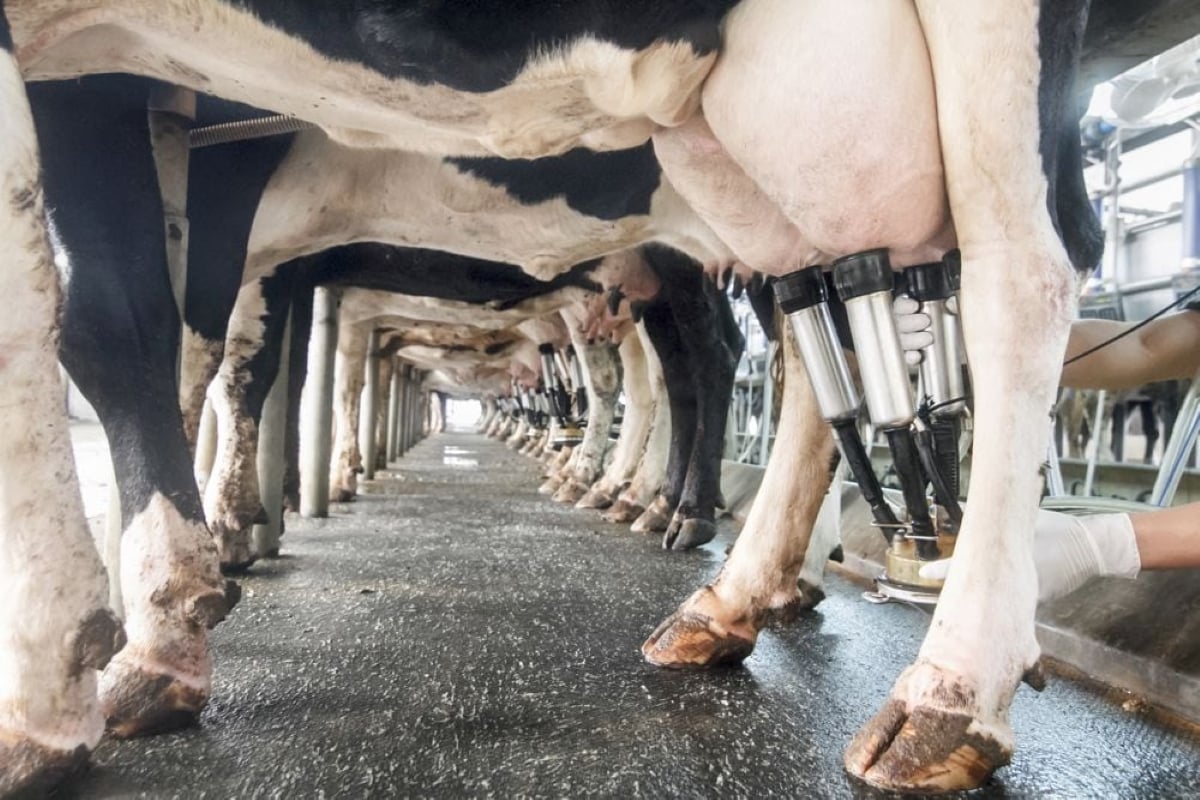A proposed potash mine north of Regina has landowners and water users questioning whether the mine is in the best interests of the province and the local economy.
YanCoal Canada, a subsidiary of Yanzhou Coal Mining Co. from China, is proposing to build a solution mine near Southey, Sask.
The Saskatchewan Farm Land Security Board has granted the company a farmland ownership exemption to acquire 60,000 acres of land in an area near Southey and Earl Grey, Sask.
It has conditional agreements in place to buy 5,500 acres and has made lease or purchase offers to other landowners in the area, including some who are critical of the province’s role in facilitating the project.
Read Also

Farm gate milk price to rise in 2026
The Canadian Dairy Commission will raise its farm gate milk price by 2.3255 per cent in February, the Crown corporation announced on Friday.
Robin Kusch, a YanCoal spokesperson in charge of public and community relations, said the company is willing to negotiate leases with local landowners rather than buying.
Leases would allow YanCoal to establish and access well heads within the well field area while allowing local landowners to continue farming in undisturbed areas.
“We have no intention of buying the entire well field area,” Kusch said.
“We’re going to pursue leasing wherever we can, and that’s in response to the fact that a lot of people in the province have expressed concerns about industrial companies coming in and buying up a bunch of agricultural land.”
About 3,200 of the 5,500 acres for which the company has already negotiated purchase agreements would accommodate the mine’s core facilities, including administrative buildings, a mill, load-out facilities, parking lots, salt waste piles and tailing ponds.
YanCoal has also discussed water use requirements with the province’s Water Security Agency.
The company has received an assurance that SaskWater could supply close to 40,000 million litres of water per day, the approximate amount that the project would need during the early stages of production.
The water would be piped from the Buffalo Pound Reservoir, nearly 100 kilometres away.
Environmental approvals are still required, but the company expects to negotiate a long-term water supply agreement with SaskWater if the project is approved.
Kusch said the project would deliver significant benefits to the area and create hundreds of permanent jobs once the mine is fully operational, potentially in four to five years.
A 30-day public comment period could begin as soon as a new provincial government is formed following the recent election and a cabinet established, potentially by early May.
“We’re thinking it could probably be May 1 … but it could be sooner,” Kusch said.
“It just depends on when government gets back to doing its normal business.”
Ministerial approvals for the project could be in place by July, depending on how the public review process goes, which would clear the way for the first phases of construction by mid 2017.
If all goes as planed, the mine could be operational by late 2020 or early 2021, Kusch added.
The $3.6 billion project still has many regulatory hurdles to cross, but local residents say the approval process needs to be slowed down.
Neil Wagner, a local businessperson who grew up near the proposed mine site, said too many unanswered question surround the development.
“It’s not that we’re opposed to development,” said Wagner, part of a local stakeholders committee that was formed to learn more about the project and increase community awareness.
“We see this project as an opportunity that could help the economy and create a lot of jobs,” he said.
“But the big push to get things through is so fast is what concerns us. What we want is some real study to be done.”
Wagner said residents’ concerns deserve a long and thorough hearing.
In addition to the potential impact on local land prices, residents also want careful scrutiny of the project’s environmental consequences, including leaching from salt piles and tailing ponds, the effect of wind-borne salts on nearby farmland and waterways and the health of the Hatfield aquifer, an important underground water source.
Solution mining involves injecting a heated brine into below-ground potash reserves.
The brine solution is then extracted and processed to separate the water from the potash.
Local residents say it is unclear whether the long-term health of the aquifer will be jeopardized.
The provinces’ environmental assessment review board has already reviewed YanCoal’s environmental impact assessment and deemed it technically sound.
The 30-day public comment period that allows local stakeholders to voice their concerns can be extended to 60 days if an extension is requested and approved.
“The price of potash sucks right now, and it’s going to take some time to recover,” said Wagner.
“When the public review period starts, we only have 30 days to look at this. What we’re saying is, ‘let’s take the time to do some really good analysis.’
“This may be very good in the short term but what about the long-term? Are we going to have a place where the next five generations are going to be able to live?”
Rick Swenson, leader of Saskatchewan’s Progressive Conservative party, agrees that the projected timelines for approval of the project are tight.
Swenson, a former provincial cabinet minister who served as the province’s energy minister in the late 1980s, said the tentative water supply agreement is an exclusive deal that would not allow any other users to draw water from the proposed pipeline.
He also questions why the province approved a 60,000 acre ownership exemption when the mine’s proponents say they have no intention of buying that much land.
He said more questions need to be asked about the potential impact on local water sources, municipal and provincial infrastructure and existing potash companies that have been exporting product to China.
“I’m certainly not against mining potash … but when you do these things, you’ve got to do them right,” Swenson said.
“They (China) have obviously been a large customer of ours for quite some time and if they’re going to produce 2.8 million tonnes of product that we’re currently selling in there, is that going to displace current production?”
Contact brian.cross@producer.com














